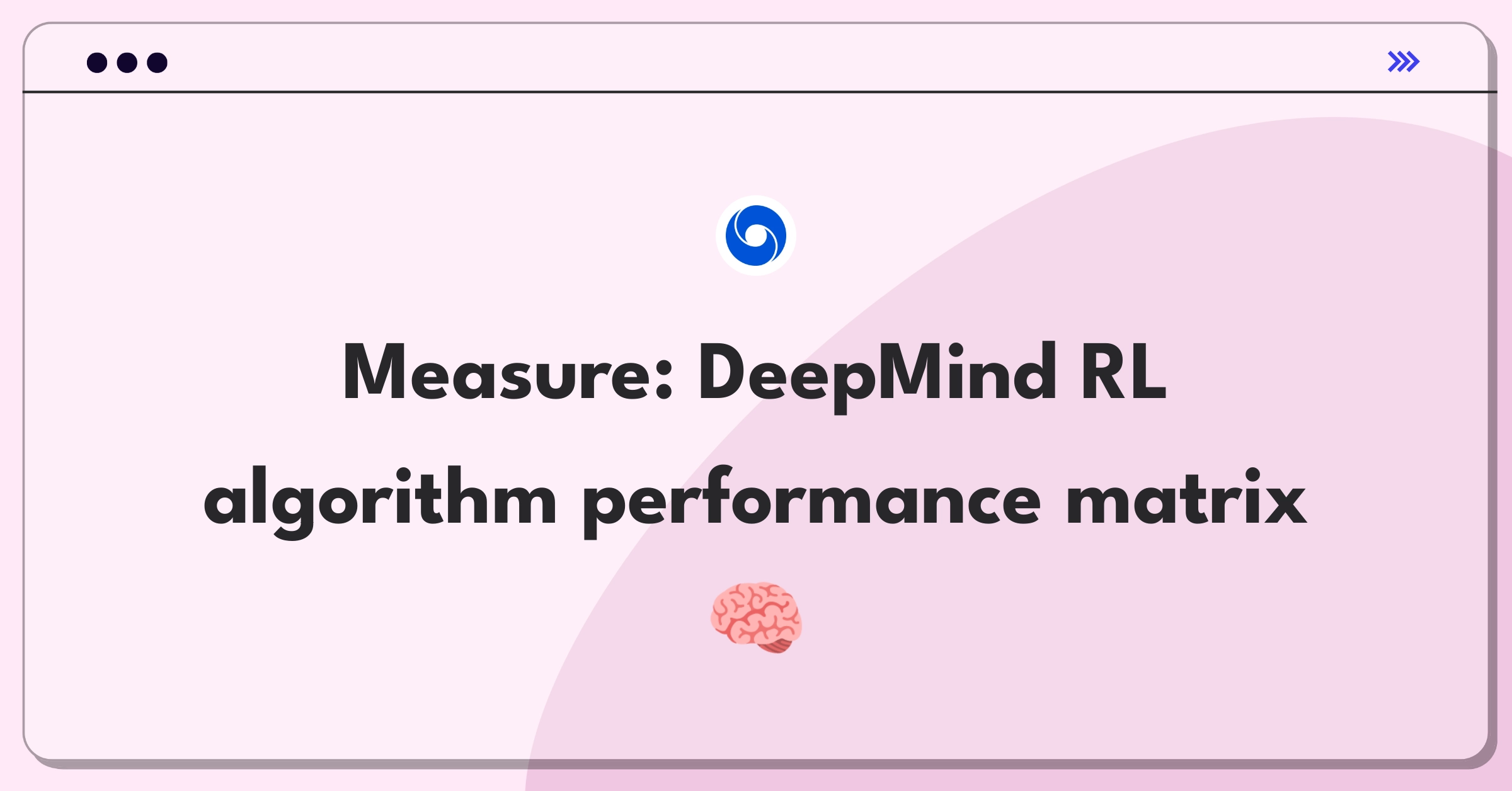Introduction
Evaluating DeepMind's reinforcement learning algorithms requires a comprehensive approach to metrics that captures both the technical performance and real-world impact of these advanced AI systems. I'll follow a structured framework covering core metrics, supporting indicators, and risk factors while considering all key stakeholders involved in the development and application of these algorithms.
Framework Overview
I'll follow a simple success metrics framework covering product context, success metrics hierarchy, and strategic implications for DeepMind's reinforcement learning algorithms.
Step 1
Product Context
DeepMind's reinforcement learning algorithms are cutting-edge AI systems designed to learn and improve their performance through interaction with complex environments. These algorithms have applications across various domains, from game-playing to scientific research and real-world problem-solving.
Key stakeholders include:
- DeepMind researchers and engineers (motivation: advancing AI capabilities)
- End-users and domain experts (motivation: leveraging AI for specific applications)
- The broader scientific community (motivation: understanding and building upon AI advancements)
- Potential commercial partners (motivation: integrating AI into products and services)
User flow typically involves:
- Problem definition and environment setup
- Algorithm training and iteration
- Performance evaluation and refinement
- Deployment and real-world application
DeepMind's reinforcement learning algorithms fit into the company's broader strategy of pushing the boundaries of AI capabilities and applying these advancements to solve complex real-world problems. Compared to competitors, DeepMind has consistently demonstrated breakthrough performances in challenging domains like game-playing (e.g., AlphaGo, AlphaZero) and protein folding (AlphaFold).
Product Lifecycle Stage: While some algorithms are in the mature stage for specific applications, the field of reinforcement learning is still rapidly evolving, with many algorithms in the growth or even introduction stages for new domains.
Software-specific context:
- Platform/tech stack: Likely built on TensorFlow or similar deep learning frameworks
- Integration points: APIs for environment interaction, data input/output, and model deployment
- Deployment model: Both cloud-based for large-scale applications and on-device for edge computing scenarios
Subscribe to access the full answer
Monthly Plan
The perfect plan for PMs who are in the final leg of their interview preparation
$99 /month
- Access to 8,000+ PM Questions
- 10 AI resume reviews credits
- Access to company guides
- Basic email support
- Access to community Q&A
Yearly Plan
The ultimate plan for aspiring PMs, SPMs and those preparing for big-tech
$99 $33 /month
- Everything in monthly plan
- Priority queue for AI resume review
- Monthly/Weekly newsletters
- Access to premium features
- Priority response to requested question


.png)